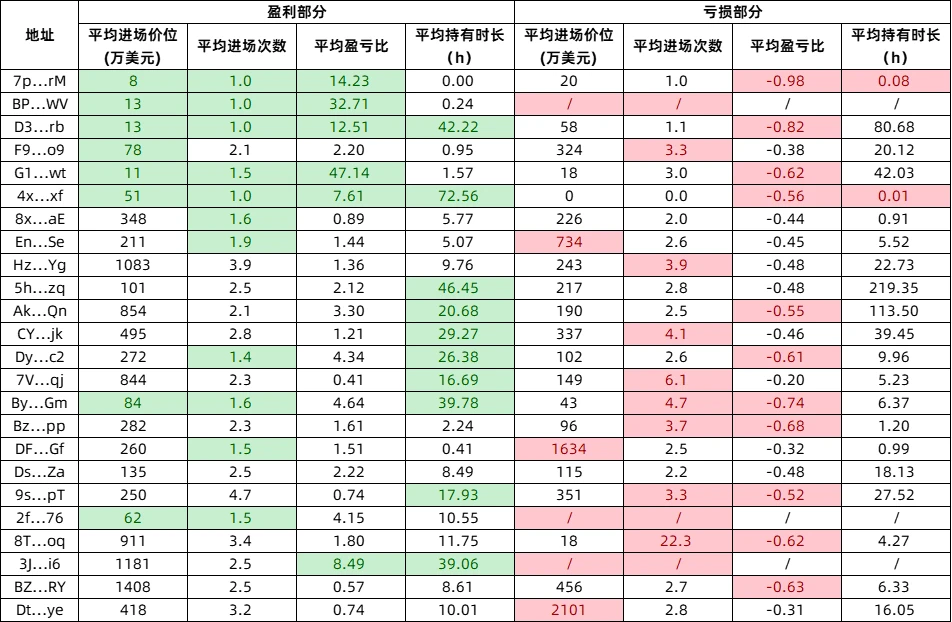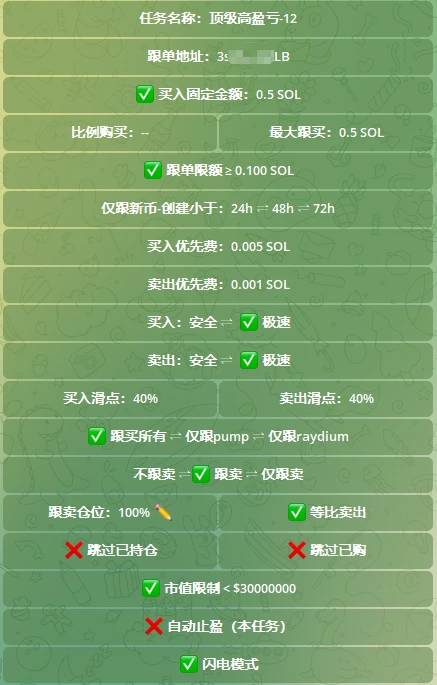Original | Odaily Planet Daily (@OdailyChina)
Author | Nan Zhi (@Assassin_Malvo)

In the previous articles “Meme Cultivation Manual: Rebirth to Become a Diamond Hand (I)” and “Meme Cultivation Manual: Rebirth to Become a Diamond Hand (II)”, the author proposed a “score evaluation method” for smart addresses, aiming to identify the “diamond hand players” among these smart addresses for copy trading, exploring whether following diamond hands can serve as a stable profit-making method.
Last week, the copy trading accounts experienced significant drawdowns. After evaluation, the author concluded that using “trading frequency” and “overall profit-loss ratio” as core assessment factors is still not comprehensive enough and lacks granularity. Therefore, a set of in-depth evaluation methods has been formulated, which will be disclosed and reviewed in this article, further sharing and discussing the copy trading system with readers.
Risk Warning: This system was launched on October 8 and has only been running for 21 days. Although it has achieved certain results, from an objective perspective, the data volume and comparative experiments are insufficient, the rigor is limited, and it is for readers' reference only. Additionally, to ensure the objectivity of subsequent tests, this article will not disclose any addresses involved in the operation.
Reflection on Drawdown: Ultimately, Profit and Loss Come from the Same Source
Drawdown Scenario
Last week, there were four accounts running copy trading, namely Account 1-4, with Accounts 1 and 2 being the core accounts that followed addresses clearly meeting the system requirements, while Accounts 3 and 4 adopted some aggressive strategies. During this period, Accounts 1 and 2 also experienced significant drawdowns, and the fundamental reasons include:
High Position, High Frequency Buying: As mentioned in the second article, some addresses like to buy tokens multiple times at a market value of one million to ten million dollars without setting stop losses, and these tokens often only exist for a few hours to a few days, lacking stability and certainty, resulting in extremely poor profit-loss ratios for such trades. One actual scenario was that when a certain token had a market value of 11 million, the copy trading target continuously bought 20 times, while Copy Trading Account 1 set a single purchase amount of 0.8 SOL, buying a total of 16 SOL, and then a few hours later, the token plummeted to a market value of 3 million, causing the largest loss in the account.
Low Position, High Frequency, Low Win Rate Buying: Some accounts are keen on buying during pump cycles or at market values of hundreds of thousands, suffering losses on more than ten trades before making a “big hit” profit once. If these addresses persist without stop losses and adopt a strategy of holding onto their big hits, they also meet the “diamond hand” criteria, but due to low price volatility, the profit potential of the copy trading addresses will be significantly lower than that of the addresses being followed, leading to a negative expected value in the long run.
Clarifying the Source: What Should the Profile of Copy Trading Targets Be?
Therefore, the author has restructured the profile of potential copy trading targets to guide the evaluation system upgrade. The original thought process is as follows:
What kind of addresses should we look for? Low trading frequency, long holding periods, able to enter at the bottom rather than FOMO chasing high, good profit-loss ratios, not cutting losses, and low drawdowns.
Which factor is most important to me?
Low drawdown ranks first, so we need to find the investment ratio in the worst loss scenario, and how many consecutive losses before a profit is made;
Secondly, it should be profitable. In addition to total profit and loss, we also need to calculate the details of the investment cost, and we do not want addresses that gamble large amounts for small returns, while also tracking the proportion of high-position FOMO in losses;
Not gambling large for small returns should also reflect the ability to enter at the bottom, tracking the proportion of low-position entries in profits;
Low trading frequency should also reflect in the number of purchases;
Long holding periods can be conveniently included in the statistics of point 4, and not cutting losses as well.
In-Depth Evaluation System
Based on the above profile requirements, the author has completed the addition of two in-depth evaluation systems, detailed as follows:
Trading Point Evaluation: Small Bets Against FOMO
The idea of this system is to evaluate each address:
Obtain the list of tokens with the highest profits and the highest losses for that address;
Filter tokens with profits and losses greater than a certain threshold, for example, the author chooses tokens with profits greater than 5000 dollars and losses greater than 2000 dollars;
Obtain the transaction details of the first purchase, second purchase, and so on, until the first sale of that token;
Statistically calculate the market value of each purchase and compute the average purchase market value;
Count how many purchases were made before the first sale;
Statistically analyze the total profit and total cost;
Statistically analyze the holding duration from the first purchase to the first sale.
The statistical results are illustrated in the following figure. Through this table, we can obtain:
The ability of each address to “buy at the bottom”, for example, the first seven addresses can buy below a million dollars in market value, and their profit-loss ratios are extremely high, making only one to two trades;
The risk of losing money due to “high-position FOMO”, for example, the last address averages entering at a market value of 20 million dollars, which is clearly unsuitable for copy trading;
The ability to make small bets, derived from the profit portion minus the average profit-loss ratio;
Stop-loss style, derived from the loss portion minus the average profit-loss ratio; the closer to -1, the less this address likes to set stop losses;
The degree of being a “diamond hand”, derived from the average holding duration.

Recent Trading Level Review
The table obtained in the previous section reflects the historical top profit and loss situations of this address, but does not reflect the recent trading level. On the other hand, the data provided by the data platform is also not entirely accurate. The author’s path to statistically analyze the “recent trading level” is as follows:
Obtain the 100 tokens recently traded by a certain address;
Exclude tokens not created during a pump;
Exclude tokens created more than 30 days ago;
Obtain the total profit and total loss of that token;
Statistically analyze the win rate of the filtered tokens.
Copy Trading System Data Report and Settings
Despite experiencing a round of drawdown, the upgraded system has significantly improved stability, currently, Copy Trading Accounts 1 and 2 have returned to their all-time highs, while Accounts 3 and 4's strategies have failed verification and have been liquidated.
Here, we disclose the copy trading target for Account 3, which is the address “HdxkiXqeN6qpK2YbG51W23QSWj3Yygc1eEk2zwmKJExp”, known as “Alien Cat”, which is an address “known throughout the universe.” Copy Trading Account 3 aimed to test this type of address with strong profit potential but was ultimately tested out with losses.

Data for each wallet as of October 29, 09:00 (UTC+8) is as follows, in SOL:

Copy Trading Settings Details
The bot used by the author is Dogee, and most of the copy trading address settings are as follows. The key points include:
Setting a minimum copy trading amount to prevent the poisoning situations mentioned in the first and second articles;
Copy all purchases, but in reality, should be set according to internal win rates and profit-loss ratios;
Proportional selling, the ultimate goal of this system, and core judgment factors include “buying once at a low position and selling in batches at a high position”, thus it is necessary to choose to sell proportionally with the addresses being followed;
Market value limits, intuitively, chasing high profits is extremely difficult, and multiple addresses have set a market value cap of 10 million dollars. However, from an objective data perspective, how profitable is the chasing high strategy? An article will be written soon to reveal this.

免责声明:本文章仅代表作者个人观点,不代表本平台的立场和观点。本文章仅供信息分享,不构成对任何人的任何投资建议。用户与作者之间的任何争议,与本平台无关。如网页中刊载的文章或图片涉及侵权,请提供相关的权利证明和身份证明发送邮件到support@aicoin.com,本平台相关工作人员将会进行核查。




